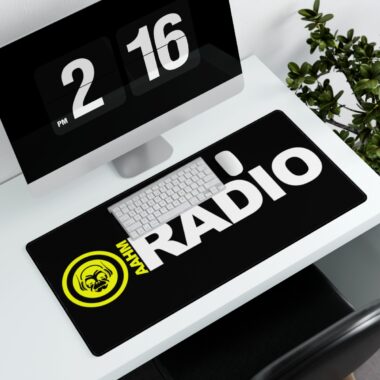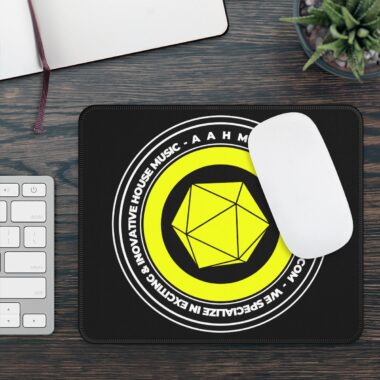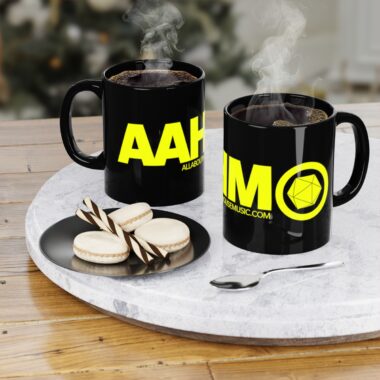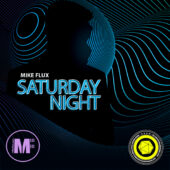
It also became one of the most important genres of the 1980s for Chicago residents in oppressed communities. The overall style of early house music had an uplifting quality and aimed to create a positive atmosphere. Many of the clubs it was performed in were frequented by members of the gay community and other minorities, giving them a place where they could unwind, relax, and feel accepted as they were.
In this article, we’ll delve into the history of house music, talk about its unique qualities, and go over some of the pioneering artists within the style.
The History Of House Music
House music was inspired by disco more than any other style of music. It really meant to pick up where disco left on in the 1970s and took a lot of influences from the scene. Most DJs used a slow mix that let them link records together without having an actual break between songs.
DJs after the disco era began making their discs sound more mechanical. The club culture was trying to move away from a pop-oriented sound, replacing pop music beats with heavy basslines, repetitive beats, and sometimes, entirely removing vocals from the music.
Disco was insanely popular in the 1970s, with record labels pushing people outside of the genre to create dance music. When it went down overnight in a major backlash called Disco Demolition Night, dance music stopped being created by record labels and was produced mainly by underground DJs.
It also was one of the biggest genres including electronic music, synthesizers, and drum machines. In addition to those developments, it was one of the genres that helped advance the art of audio mixing. That process allowed multiple sounds to be compiled into one track, changing the dynamics and tempos of fan favorites and hits to something more oriented for dance clubs.
While most DJs stuck with the same playlist they used during the disco era, a few notable outliers became pioneers of the house music style. Frankie Knuckles and Ron Hardy were two of the most influential early pioneers of the genre, playing non-mainstream playlists in clubs and mixing unique dance music.
Knuckles, often credited as the Godfather of House Music, started out as a disco DJ in New York before moving to Chicago. He was known for mixing different songs together instead of playing records one after another, as well as exploring adding drum machines and reel-to-reel tape players to let him create new music.
Hardy mostly played unconventional mix tapes in house clubs. Like Knuckles, he combined different tracks and added sounds from synthesizers and drum machines. He worked at the Muzic Box—sometimes spelled Music Box—another of the preeminent house music clubs of the early 1980s.
He was best known for mixing virtually everything together, from disco tracks to new wave sounds, always keeping his music going with a manic level of energy with little regard for sound quality. Speed was key for him, even at one point maxing the speed on a Stevie Wonder cut to the joy of his audience.
Marshall Jefferson, another prominent name in house music, only got into the style because of Hardy. After visiting the Muzic Box, he said:
“I wasn’t even into dance music before I went to the Music Box […]. I was into rock and roll. We would get drunk and listen to rock and roll. We didn’t give a fuck, we were like ‘Disco Sucks!’ and all that. I hated dance music ‘cos I couldn’t dance. I thought dance music was kind of wimpy until I heard it at like Music Box volume.”
If you’re looking for songs that stand as the precursor to house music, you should check out Colonel Abrams’ Trapped.
The 1980s were when house music really got its start, with everything else just being the leadup to it. By the mid-1980s, Chicago DJs were producing and playing original compositions, which was possible because electronic instruments had just gotten to be more affordable than in past years, making it more accessible to create their own music instead of just mixing tracks together to make new sounds.
These kinds of home-grown DJs were featured on Chicago radio stations and found their work played in clubs that mainly catered to African American, Latino, and gay patrons. By 1985, it was understood that house music encompassed all of the genres of post-disco club music and electronic synthesizer-enhanced compositions. From there, house music split into a few different subgenres.
The Hot Mix 5 show on radio station WBMX-FM was an integral part of popularizing house music for the general public. Eventually, house music would be exported from Chicago, and the Detroit and UK house music scenes were born. For this section though, we’ll mostly be sticking to the house music scene in Chicago and its developments.
By 1988, house music began to decline in popularity, but the space the genre left was filled in by a subgenre called hip-house, a crossover of house and hip hop music. Tyree Cooper’s single Turn Up The Bass featuring Kool Rock Steady from 1988 was one of the most influential early hip-house songs. Two years earlier, the English group The Beatmasters claimed to have invented the genre with their track, Rok Da House.
House Music In The UK
House music became incredibly popular in the UK in the dance club scene of the 1980s. Eventually, it even made it onto the UK singles charts with DJs like Eddie Richards, Farley “Jackmaster” Funk, and Steve Hurley leading the scene in the early days. By 1987, a lot of influential Chicago DJs toured the UK, including big names like Knuckles, Jefferson, and Mr. Fingers.
This influx of house music spawned acts like the Beatmasters, Krush, Yazz, Bomb the Bass, and S-Express. Early British house music quickly evolved to set itself apart from Chicago house music sound. Rap was often used for the vocal parts of songs, and they based a lot of early hits on sample montages rather than mixes. Unlike the US style, humor was an integral part of UK house music.
House Music Outside Of Chicago
Outside of Chicago, one of the first places to pick up house music was the Detroit music scene. In the mid-1980s, they began developing a new kind of electronic dance music centered around The Belleville Three, Juan Atkins, Kevin Saunderson, and Derrick May. They were responsible for fusing the stylings of house music with the current dance music in Detroit and adding futuristic sounds to their albums.
The Detroit house music scene was responsible for spawning the techno genre years later. The term house wasn’t as widely used in Detroit and wasn’t as big a deal as in Chicago, so the terminology eventually started changing.
House Music Genres
We said house music split off into several different subgenres but neglected to talk about any of them. For this section, we’ll go over the different styles of house music throughout the years, including some of the more recent ones.
Chicago House
Chicago house is the original style of house music that was developed and pioneered by Chicago DJs in the early 1980s. It’s known for blending elements of disco, funk, jazz, soul, and R&B while adding electric drum machines. The original style of house music kept an upbeat tone and was some of the most inclusive music in history.
Deep House
Deep house music can be traced back to Mr. Fingers’s jazzy and soulful style. Some of the best-known works in the genre include Mystery Of Love and Can You Feel It, the latter of the two is one of the biggest hits in the history of house music. This type is one of the slowest versions of house music, focusing on slow grooves and a deeper bass sound than traditional house music, giving it its name.
Acid House
Acid House was rougher and more abstract than typical house music. It came out of experiments with the Roland TB-303 drum machine, which produced a relatively squelchy sound. Phuture was the group credited with being the first to use the TB-303 in-house music, producing the twelve-minute Acid Tracks music that was played by Ron Hardy at the Muzic Box.
Jackin House
Jackin was a style of dancing that was common in house music clubs and is mostly associated with house music as a whole. Eventually, it broke away into its own genre of house music, incorporating a heavier funk influence in the basslines and sampling choppy vocals. On average, jackin house is faster than typical house music, coming in between 126 and 136 beats per minute.
Disco House
Disco house music is known for keeping the orchestral sounds you find in disco music but still picking up the pace as house music traditionally should. It sampled a lot of music from disco, so much that it basically sounded like disco music that had heavy drum kicks and repetitive loops added to it.
Tech House
Tech house stands at the gap between house music and techno. It feels grittier than standard house music and has a darker atmosphere surrounding it, but it lacks the consistent driving sound you’ll get in techno.
Electro House
Electro house started out being driven by the electronic sounds of the 1980s, but it quickly evolved into a synth-heavy, high-energy style of music. You’ll find that the EDM community loves the stuff, as it keeps the core 4/4 rhythm of house music but focuses way more on powerful synth stabs. Typically, electro-house music is played at 128 beats per minute and has huge rises and drops.
Progressive House
Progressive house music has evolved a lot since it came on the scene in the 1990s. Today, it focuses more on progressive melodies than driving loops and riffs on the synthesizer. You could describe it as groovy, having more of a relaxed vibe than electro and tech house.
Future House
Future House is one of the newest additions to the list of house music subgenres. It incorporates elements of electro, techno, and deep house music that make it great for large festivals. It’s especially popular at raves, with a faster-than-your-average-house-music tempo, electric synth stabs, and driving basslines.
Tropical House
If you didn’t guess, tropical house music incorporates elements you would normally find in tropical music. It’s one of the slower forms of house music that often gets played at beach parties and is more relaxing than the typical dancing style of house music.
Characteristics Of House Music
House music is characterized by having repetitive 4/4 rhythms that can come from bass drums, off-beat hi-hats, snare drums, and snaps. Typically, it always remains within 115 to 125 beats per minute. Synthesizer riffs, deep basslines, and sampled vocals are also oft-seen traits of the music.
House typically has specific models for the beats. The bass drum will hit on all four beats, while the snares, claps, snaps, and higher beats hit on beats two and four. It’s rare for drum beats in house music to be played on actual drums, instead preferring electronic drum machines like the Roland TR-808, TR-909, or a TR-707.
When the scene developed it was in Chicago, so the purest form of house music will be derived there. Chicago house music often used clave patterns for its signature rhythm riff. A clave pattern is used as a timekeeping tool in a lot of Cuban music, though it originated in sub-Saharan African cultures.
You’ll find it in all parts of the African diaspora, from Louisiana and Haitian Voodoo drumming to African-Brazilian and Uruguayan Music. You’ve likely heard of the clave rhythm before, it was just called the hambone, and was used in all kinds of popular American music styles.
House tracks are often eight-bar parts that get repeated. They’re famous for building bass loops and bass lines produced by a synthesizer. Sampling is another major component of house music, taking samples of jazz, disco, funk, and soul music and turning them into music that’s easier to dance to in a club atmosphere.
Pretty much all house music stuck to specific lengths. In-house house music was edited onto seven or eight-minute discs, while radio edits of the tracks were always three and a half minutes. Lyrically, house music might just straight up not have any vocals.
In a lot of cases, the vocal parts of songs were sampled from other music and repeated on certain parts of the tracks. While there were many songs with vocals, the majority of house music was purely instrumental with vocal sampling and as minimalist as possible.
The Social And Political Side Of House Music
Outside of the core elements of house music, it stood for other things. Early house music was meant to create a positive and uplifting atmosphere, especially when it came to groups that were normally outsiders. African Americans, Latinos, and people within the gay subculture would all be met by an uplifting message in house music.
In the 1980s, the house music dance scene was one of the most inclusive places you could be, as well as one of the best integrated and progressive spaces of the time. It allowed everyone, from all walks of life, to come in and dance in a positive atmosphere.
It’s incredibly relevant to note that segregation in the US wasn’t officially ended until 1964 with the Civil Rights Act. But, just because the federal government struck down all segregation laws, it didn’t change life for people overnight.
The country was still getting used to the new way of things, and there were rampant prejudices, persecution, and oppression of minorities. Clubs and other venues were largely member-only establishments, meaning they could pick and choose who came in.
African Americans, Latinos, and gay community members were all among the people who had to deal with—putting it lightly—a lot of bullshit. House music and house music clubs providing a safe space for those individuals was revolutionary and one of the biggest reasons for its success as a genre.
Those places strove for unity and brought people closer together, despite the overall social status quo still pulling in the other direction. House clubs were an incredibly valuable space in American society and a few decades ahead of their time.
With house music being so far dedicated to the expression of freedom, it was all about letting go and enjoying yourself. The goal of the DJs was to create a dream world of emotions that could help guide communities together instead of driving them apart.
The use of club drugs like MDMA, marijuana, and ketamine was common to help encourage clubgoers to keep dancing and loosen up. It would put many members in a trance-like state that generally eased the mood of everyone involved.
The role of a house DJ has been described as a type of secular priest. People went to house clubs to be uplifted and grow closer as a community, two of the same reasons people go to churches. Knuckles described The Warehouse club in Chicago as a “church for people who have fallen from grace” and Jefferson compared it to old-time religion by saying people acted the same way they did back in the day, “in the way that people just get happy and screamin’.”
Some houses took their freedom of expression to another level. Those clubs played music that called for equality, unity, and freedom regardless of racial or sexual prejudices. The ideals of Peace, Love, Unity, and Respect would also appear later in the unconnected rave scene.
The Most Important Figures In House Music
Frankie Knuckles
Francis Warren Nicholls, Jr. was one of the most important figures in pioneering and advancing house music. Called the Godfather of House Music, he started out as a disco DJ in New York City before moving to Chicago and was the regular DJ for The Warehouse. He experimented with his disco roots and played there until 1982 when he started his own nightclub the Power Plant.
Knuckles was undeniably one of the better DJs of his era, winning a Grammy Award in 1997 for Remixer of the Year (non-classical). One of his greatest quotes was when he said that house music was disco’s revenge.
Ron Hardy
Alongside Knuckles, it’s impossible to talk about house music without at least mentioning Hardy. He was one of the earliest producers of house music at his home club the Muzic Box and would later be recognized for his innovations in music editing.
Marshall Jefferson
While Jefferson originally wanted nothing to do with any kind of dance music, house music called out to him. His track The House Music Anthem (Move Your Body) would become the quintessential house music anthem for years. Surprisingly, it was also the first house music track to include a piano.
The Beatmasters
On the UK side of house music, one of the all-time leaders has to be The Beatmasters. Their hit track Rok Da House is widely regarded as the first-ever hip-house song. The group would land four Top 20 singles in the UK and their career would see them remix records for numerous other artists.
Final Thoughts On House Music
Disco might have died, but that didn’t mean that dance music wasn’t popular anymore. The advancements that disco made in audio mixing and DJing had a profound impact on house music. The genre’s 4/4 rhythm, everpresent deep basslines, and clave styles helped set it apart as a free expression of dance music during its heyday and would influence other styles of music from techno to hip hop.
House music became one of the defining genres of music in Chicago during the 1980s. It would also be proven as one of the most inclusive music spaces in all of history. Clubs playing house music were for anyone and everyone, it didn’t matter who you were. They served as important, safe spaces for oppressed people, especially African, Latino, and gay communities, to come together and enjoy themselves in a positive environment. House clubs have been compared to churches in that they uplifted their patrons and brought communities together.
It’s important to remember that segregation in the US only ended in 1964 and that the Civil Rights Act didn’t magically get rid of prejudice and oppression overnight. By the time house music got going in the 1980s, most of the country was still getting used to the new status quo. House music clubs were some of the best-integrated spaces in the country. That fact alone makes them incredibly valuable to the social development of the US, and it’s a shame that so few people know anything about them.


















Comments
This post currently has no comments.